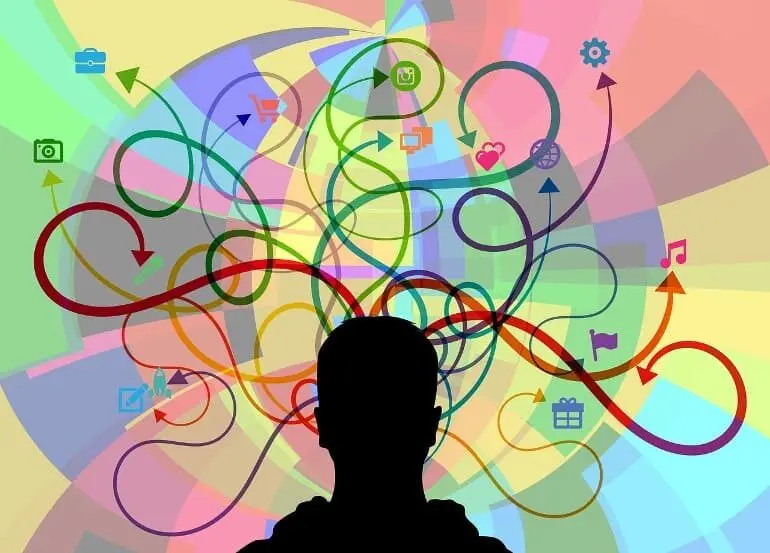
Have you ever walked out of a store with a cart full of impulse purchases, or agonized for hours over a seemingly simple decision? Believe it or not, there’s a whole science behind why we choose what we choose. It’s not just about logic and weighing pros and cons; our brains are wired with fascinating quirks and shortcuts that influence our decisions in surprising ways.
This exploration into the psychology of decision-making will equip you with the knowledge to understand what happens beneath the surface when you’re faced with a choice. We’ll unravel the mysteries of cognitive biases, the sneaky mental shortcuts that can lead us astray, and the phenomenon of decision fatigue, where our ability to make good choices gets depleted. By understanding these concepts, you’ll be empowered to make more informed and deliberate decisions in all aspects of your life. So, buckle up, decision-makers extraordinaire, and let’s unlock the secrets hiding within your mind!
The Cogs and Gears of Choice: A Glimpse into the Decision-Making Process
Making a decision, no matter how big or small, involves a complex interplay between different cognitive functions. Here’s a simplified breakdown of the key players:
- Information Gathering: We gather information relevant to the decision at hand, considering options and potential outcomes.
- Evaluation and Analysis: We weigh the pros and cons of each option, analyzing potential risks and rewards.
- Intuition and Emotion: Our gut feelings and emotions can play a significant role in influencing our choices.
- Decision and Action: We finally make a choice and take action based on the information processed and our internal compass.

While this might seem like a straightforward linear process, the reality is far more nuanced. Our brains often rely on mental shortcuts – cognitive biases – to navigate the overwhelming amount of information we encounter daily.
The Biases Within: How Mental Shortcuts Can Lead Us Astray
Cognitive biases are systematic errors in thinking that can skew our decision-making processes. Here are a few common biases to be aware of:
- Confirmation Bias: We tend to favor information that confirms our existing beliefs and downplay anything that contradicts them. Imagine only researching restaurants that get rave reviews from your friends, even if other options might be a better fit for your budget.
- Anchoring Bias: The first piece of information we encounter can disproportionately influence our decisions. For instance, the initial price you see on a product can anchor your perception of its value, even if there are better deals available.
- Availability Bias: We tend to overestimate the likelihood of events that are easily recalled. Seeing a news story about a plane crash might make you irrationally fearful of flying, even though statistically, it’s still a very safe mode of travel.
- Loss Aversion: We tend to feel losses more intensely than gains. This can lead to risk-averse behavior, like holding onto an underperforming investment because the idea of losing money feels worse than the potential for future growth.
By understanding these biases, you can become more mindful of their influence on your decisions. Actively seeking out diverse perspectives, questioning first impressions, and considering alternative options can help mitigate the impact of these mental shortcuts.
Decision Fatigue: When Your Brain Runs Out of Willpower
Imagine your brain is like a muscle. The more decisions you make throughout the day, the more mentally fatigued it becomes. This is the concept of decision fatigue. Just like your muscles get tired after a workout, your brain’s ability to make good choices gets depleted with each decision you make.
Here’s how decision fatigue can impact your choices:
- Increased Reliance on Biases: When mentally fatigued, we’re more likely to rely on mental shortcuts and biases, leading to suboptimal decisions.
- Impulsive Choices: Our ability to resist temptation and make reasoned judgments decreases with decision fatigue, making us more susceptible to impulsive choices.
- Decision Paralysis: In the face of too many choices, especially when fatigued, we might experience decision paralysis, avoiding making a decision altogether.
So, how can you combat decision fatigue? Here are some tips:
- Prioritize Important Choices: Schedule important decisions for when you’re mentally fresh, like the mornings.
- Simplify Options: Limit the number of choices you have to make throughout the day. For example, set up a work wardrobe capsule or have a go-to meal plan for busy weekdays.
- Automate Decisions: Delegate some decision-making power! Create routines and habits for everyday tasks, like packing your gym bag the night before or setting aside specific times for checking emails. This frees up your mental energy for more important choices.
- Get Enough Sleep: A well-rested brain makes better decisions! Prioritize sleep hygiene habits for optimal cognitive function.

By recognizing decision fatigue and implementing these strategies, you can conserve your mental resources and make wiser choices, even when your brain feels like it’s running on fumes.
The Power of Awareness: Harnessing the Psychology of Choice for Better Decisions
Understanding the psychology of decision-making isn’t just about acknowledging cognitive biases and decision fatigue. It’s about empowering yourself to make informed and deliberate choices that align with your values and goals. Here are some practical takeaways:
- Slow Down and Reflect: Don’t rush into decisions. Take the time to gather information, consider options, and weigh the pros and cons.
- Challenge Your Assumptions: Don’t let biases cloud your judgment. Question your initial thoughts and actively seek out diverse perspectives.
- Consider Your Values: Make choices that align with what’s important to you. Ask yourself if this decision aligns with your long-term goals and values.
- Embrace the Power of “No”: Saying no to unimportant decisions or requests allows you to conserve your mental energy for when it truly matters.
- Learn from Experience: Reflect on past decisions, and identify areas for improvement. Did a bias influence your choice? Could you have gathered more information? Use these experiences to make better choices moving forward.
By incorporating these strategies into your decision-making process, you can transform the way you approach choices, big and small. Remember, the psychology of decision-making isn’t about eliminating risk or achieving perfect choices. It’s about understanding the inner workings of your mind, recognizing potential pitfalls, and developing tools to make conscious, well-informed decisions that lead to a more fulfilling life.
Read Similar Posts
- The Silent Thief: How Sleep Deprivation Wreaks Havoc on Your Body
- The Science Behind Habits: Unlocking the Secrets of Lasting Change
- The Science of Sleep: Optimizing Your Sleep for Peak Performance
Conclusion: Taking Control of Your Choices
The human mind is a fascinating decision-making machine, equipped with both powerful logic and quirky shortcuts. By understanding the psychology of decision-making, including cognitive biases and decision fatigue, you can become a more mindful and strategic decision-maker. This newfound awareness empowers you to choose consciously, prioritize what matters most, and navigate the world with greater clarity and purpose. So, the next time you’re faced with a decision, take a deep breath, tap into the power of your informed mind, and make a choice you can be proud of!
FAQs: Demystifying the Art of Making Choices
FAQ 1: Is there anything wrong with relying on intuition?
Intuition can be a valuable tool in decision-making, but it shouldn’t be the sole factor. Combine your gut feeling with logic and reason by gathering information and analyzing options before making a final choice.
FAQ 2: How can I improve my ability to make quick decisions?
Practice makes perfect! The more you consciously make decisions and reflect on them, the more confident and efficient you’ll become. Start with small, everyday choices and gradually work your way up to bigger decisions.
FAQ 3: What if I get overwhelmed by too many options?
Decision paralysis is a real phenomenon. Simplify your options whenever possible. For example, research a few restaurants beforehand instead of browsing menus at every eatery on the street. Prioritize and focus on the most important factors in your decision.
FAQ 4: Can I “train” myself to overcome cognitive biases?
By becoming aware of common biases, you can start to identify them at play in your own thinking. Actively seek out information that challenges your existing beliefs and consider alternative perspectives. The more you practice mindful decision-making, the better equipped you’ll become to mitigate the impact of biases.
FAQ 5: What are some resources for learning more about the psychology of decision-making?
There are many excellent books and online resources available on the topic. Consider exploring books by authors like Daniel Kahneman (Thinking, Fast and Slow) or Malcolm Gladwell (Blink). You can also find informative articles and videos from psychology websites and educational institutions.
By harnessing the power of the psychology of decision-making, you can transform your choices from reactive impulses to deliberate actions that lead to a more fulfilling and successful


